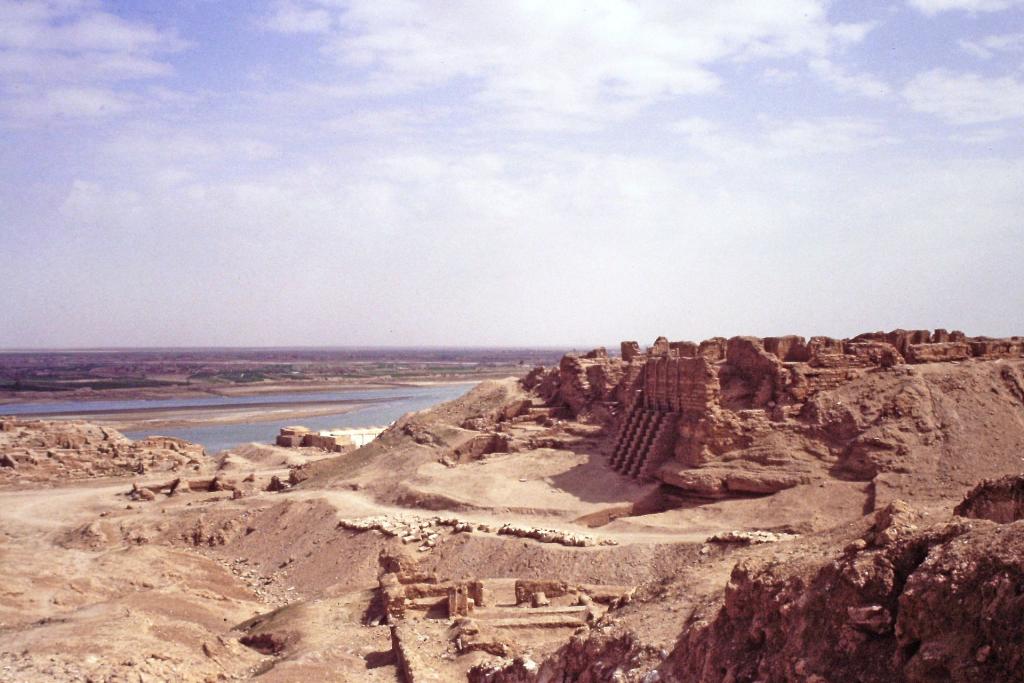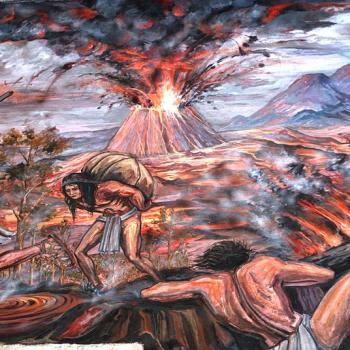
(Wikimedia Commons public domain photograph)
***
Here are five Interpreter articles from a previous number of the journal that might catch your interest:
Abstract: This paper addresses the early Christian transition from temple-based Judaism to the Constantinian basilica of the fourth century. David argues that some Christians of the second and early third centuries may have had places of worship that, while not monumental in scale, qualify typologically as temples and were understood as such. These sacred structures may have been used for the performance of baptisms for the dead, as suggested by Doctrine and Covenants 124. In support of this thesis, he takes as case studies the Christian places of worship at ancient Edessa and Dura Europos, based on a combination of textual sources and archaeological remains. David then briefly applies these findings to a question posed years ago in studies by Hugh Nibley and John Lundquist, “What Is a Temple?”
[Editor’s Note: Part of our book chapter reprint series, this article is reprinted here as a service to the Latter-day Saint community. Original pagination and page numbers have necessarily changed, otherwise the reprint has the same content as the original.
See David Calabro, “From temple to church: Defining sacred space in the Near East,” in The Temple: Past, Present, and Future. Proceedings of the Fifth Interpreter Foundation Matthew B. Brown Memorial Conference, 7 November 2020, ed. Stephen D. Ricks and Jeffrey M. Bradshaw (Orem, UT: The Interpreter Foundation; Salt Lake City: Eborn Books, 2021), page numbers forthcoming. Further information at https://interpreterfoundation.org/books/the-temple-past-present-and-future/.]
Abstract: This article offers evidence that at least some Book of Mormon authors may have understood the potential for post-mortal preaching of the gospel. Indeed, they may have recognized that the future Book of Mormon would be a tool to spread the gospel not only among the living but also among those in the spirit world. Prophecies about the message of the Book of Mormon and the restored gospel being for all mankind may have broader scope than previously recognized, with application on both sides of the veil.
Abstract: The phrase goodness of God does occur occasionally in the Hebrew Bible but has not been considered by Old Testament scholars to be an independent principle in Israelite theology. Rather, it has been interpreted as just another way of talking about God’s acts of hesed, or loving kindness for his covenant people and is usually interpreted in the context of the covenants Israel received through Abraham and Moses. The Book of Mormon clearly echoes that Old Testament pattern but also presents two additional conceptual frameworks that are explained in terms of the goodness of God. It advances an explicit divine plan of redemption or salvation that existed before Abraham — even before the creation of the earth — which had as its purpose making eternal life possible for God’s human children universally — not just the descendants of Abraham. And it also teaches the gospel or doctrine of Christ that provides the path individuals must walk to take full advantage of that plan — as they become good like God and qualify to enter his presence and receive eternal life. Nephite usage radically expands the Old Testament concept by portraying this mortal probation as each person’s God-given opportunity to become good like God. The goodness of God is frequently invoked by the Nephite prophets as a basic theological concept which can explain why God advanced his plan of salvation for men before the world was and why he is completely reliable in blessing and protecting those who have entered the covenant path by embracing his gospel and striving to endure to the end. The Nephites also used the phrase in the Old Testament pattern to explain the acts of God in delivering, blessing, and preserving his covenant people. Furthermore, some usages seem to invoke all three of these contexts simultaneously, demonstrating the comfortable integration of each of these perspectives in Nephite theological understanding.
Abstract: The authors begin by highlighting the importance of Book of Moses research that has discovered plausible findings for its historicity, rendering it at least reasonable to give the benefit of the doubt to sacred premises — even if, ultimately, the choice of premises is just that, a choice. Emphasizing the relevance of the Book of Moses to the temple, they note that the Book of Moses is not only an ancient temple text, but also the ideal scriptural context for a modern temple preparation course. Going further, the authors address an important question raised by some who have asked: “Since Christ is at the center of the gospel, why doesn’t the temple endowment teach the story of the life of Christ? What’s all this about Adam and Eve?” The answer given in detail in the paper is as follows: “The story of the life of Christ is the story of giving the Atonement. And the story of Adam and Eve is the story of receiving the Atonement. Their story is our story, too.”
[Editor’s Note: Part of our book chapter reprint series, this article is reprinted here as a service to the Latter-day Saint community. Original pagination and page numbers have necessarily changed, otherwise the reprint has the same content as the original.
See Bruce C. Hafen and Marie K. Hafen, “Adam, Eve, the Book of Moses, and the Temple: The Story of Receiving Christ’s Atonement,” in Tracing Ancient Threads in the Book of Moses: Inspired Origins, Temple Contexts, and Literary Qualities, edited by Jeffrey M. Bradshaw, David R. Seely, John W. Welch and Scott Gordon (Orem, UT: The Interpreter Foundation; Springville, UT: Book of Mormon Central; Redding, CA: FAIR; Tooele, UT: Eborn Books, 2021), page numbers forthcoming. Further information at https://interpreterfoundation.org/books/ancient-threads-in-the-book-of-moses/.]
Abstract: We are told in the Title Page of the Book of Mormon that the Book of Mormon was revealed in our day “to show unto the remnant of the house of Israel what great things the Lord hath done for their fathers; and that they may know the covenants of the Lord, that they are not cast off forever.” Hence, the covenantal context, structure, and logic of the Book of Mormon demand further consideration, exploration, and elucidation. A prosperous starting point is the phrase “If ye keep my commandments ye shall prosper in the land.” This covenantal phrase is used throughout the Book of Mormon as a summary of the theological logic of the suzerain-vassal treaty covenant type in which God sought to secure the fidelity of his people, who would receive in exchange continued prosperity in His appointed promised lands.











